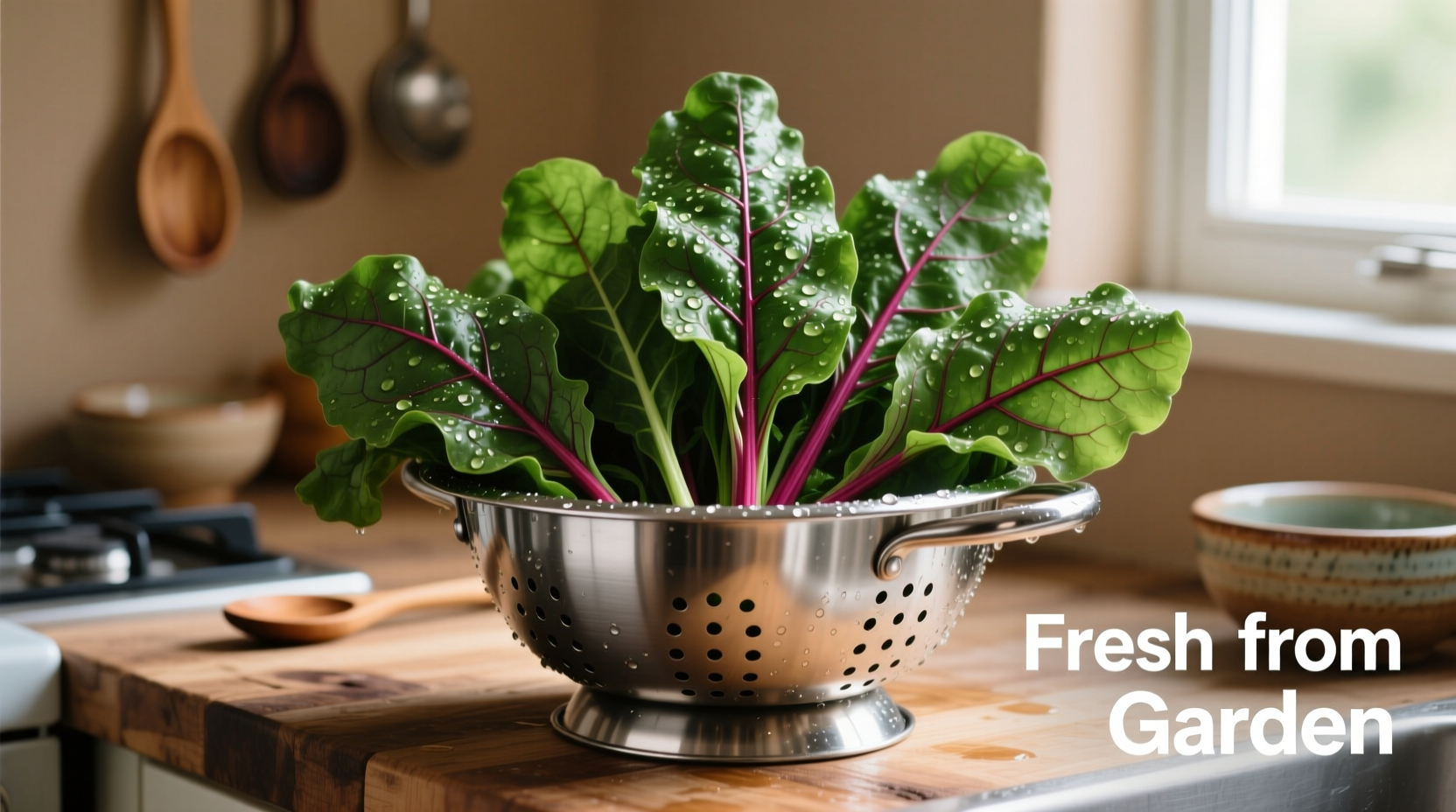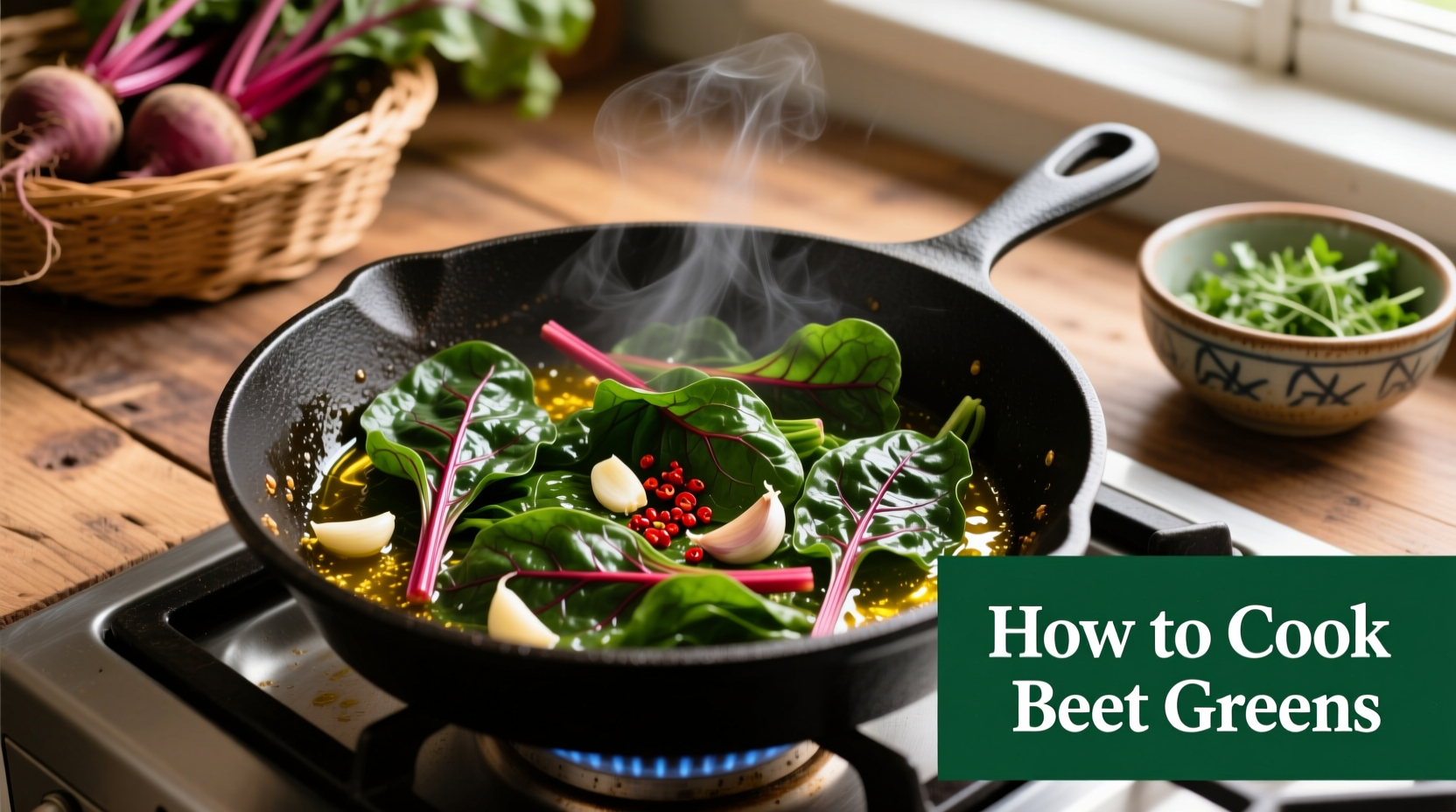Often discarded with the roots, beet greens represent one of the most nutritious and versatile leafy vegetables you're probably overlooking. Packed with more iron than spinach and abundant in vitamins A, C, and K, these vibrant greens deserve a prime spot in your kitchen repertoire. With proper preparation techniques, you can transform what many consider kitchen waste into restaurant-quality dishes that elevate everyday meals.
Selecting and Storing Fresh Beet Greens
When shopping for beets with greens attached, look for crisp, deep green leaves without yellowing or wilting. The stems should appear firm and vibrant - red, pink, or white depending on the beet variety. Greens attached to smaller beets tend to be more tender than those with larger roots.
For optimal freshness, separate the greens from the roots immediately after purchase. Store them in a perforated plastic bag with a damp paper towel in your refrigerator's crisper drawer. Properly stored, beet greens maintain quality for 3-5 days. Never wash greens before storage, as excess moisture accelerates spoilage.
| Nutrient Comparison (per 100g raw) | Beet Greens | Spinach | Kale |
|---|---|---|---|
| Vitamin K | 639µg (533% DV) | 483µg (402% DV) | 705µg (587% DV) |
| Vitamin A | 506µg (56% DV) | 469µg (52% DV) | 681µg (76% DV) |
| Iron | 1.2mg (7% DV) | 2.7mg (15% DV) | 1.5mg (8% DV) |
| Calcium | 114mg (9% DV) | 99mg (8% DV) | 150mg (12% DV) |
Nutritional data sourced from USDA FoodData Central (fdc.nal.usda.gov)
Proper Cleaning Technique: Removing Grit Completely
Beet greens often harbor significant amounts of soil between their leaves and along the stems. The most effective cleaning method involves:
- Fill a large bowl with cold water
- Submerge greens completely and swish gently
- Allow dirt to settle at bottom (about 2 minutes)
- Lift greens out (don't pour, which would redistribute dirt)
- Repeat until water remains clear
For stubborn dirt in stem crevices, use a soft vegetable brush under running water. Always dry greens thoroughly in a salad spinner before cooking - excess water creates steam instead of proper sautéing.
Essential Preparation: Stem Management
Unlike many leafy greens, beet stems require special attention due to their thicker texture. Follow this professional chef technique:
- Tender stems (thin, flexible): Chop into 1-inch pieces and add with leaves
- Medium stems (pencil-thick): Chop into 1/2-inch pieces and add 2-3 minutes before leaves
- Thick stems (thumb-thick): Slice lengthwise then crosswise into thin pieces, adding 5 minutes before leaves

Four Professional Cooking Methods
1. Quick Sauté Method (3-5 minutes)
The fastest technique for weeknight meals:
- Heat 1 tbsp olive oil in skillet over medium-high heat
- Add stems first, cook 2 minutes until slightly tender
- Add garlic or shallots, cook 30 seconds until fragrant
- Add leaves in batches, stirring until wilted (2-3 minutes)
- Finish with lemon juice, salt, and pepper
2. Steaming Technique (5-7 minutes)
Preserves maximum nutrients while maintaining vibrant color:
- Place 1 inch water in pot with steamer basket
- Bring to simmer, add stems first
- Cover and steam 3 minutes
- Add leaves, steam 2-4 more minutes until tender-crisp
- Toss with toasted nuts and balsamic reduction
3. Roasting Approach (15-20 minutes at 400°F)
Creates caramelized edges and concentrated flavor:
- Toss greens with 1 tbsp oil, salt, and pepper
- Spread in single layer on parchment-lined sheet
- Roast 15-20 minutes until edges are crisp
- Finish with lemon zest and flaky sea salt
4. Soup and Stew Integration
Add during final 5-7 minutes of cooking to maintain texture and color. Works particularly well in:
- Minestrone
- White bean soup
- Tomato-based stews
| Cooking Method Comparison | Best For | Texture Result | Flavor Profile |
|---|---|---|---|
| Sautéing | Weeknight meals, quick preparation | Tender-crisp | Bright, fresh with garlic notes |
| Steaming | Nutrient preservation, delicate dishes | Firm yet tender | Pure vegetable flavor |
| Roasting | Flavor concentration, side dishes | Crisp edges, tender center | Caramelized, slightly sweet |
| Soup Integration | Hearty meals, winter dishes | Soft but not mushy | Blended with other ingredients |
Flavor Pairing Recommendations
Beet greens work beautifully with these complementary ingredients:
- Acids: Lemon juice, apple cider vinegar, balsamic
- Aromatics: Garlic, shallots, onions, ginger
- Fats: Olive oil, toasted nuts, avocado
- Proteins: Eggs, white beans, salmon, feta cheese
- Spices: Red pepper flakes, smoked paprika, cumin
Avoiding Common Mistakes
Professional chefs consistently avoid these pitfalls:
- Overcooking: Greens become mushy and lose vibrant color after 7 minutes of cooking
- Adding stems and leaves together: Results in either undercooked stems or overcooked leaves
- Insufficient cleaning: Gritty texture ruins the eating experience
- Using low heat: Prevents proper wilting and creates steamed rather than sautéed texture
Storage and Preservation Tips
Maximize your beet greens' shelf life with these techniques:
- Store cleaned, dried greens in airtight container with paper towel
- Freeze blanched greens for up to 6 months (remove excess water first)
- Make pesto with excess greens for versatile sauce option
- Use within 3 days for optimal texture and nutrient retention











 浙公网安备
33010002000092号
浙公网安备
33010002000092号 浙B2-20120091-4
浙B2-20120091-4